I Found It In the Archives! 2012 National Competition Results
Julie Dresser, a teacher’s aide from Sycamore, Illinois, is the winner of the I Found It In The Archives! 2012 national contest sponsored by the Society of American Archivists. Her essay describes how a trip to the Benjamin F. Feinberg Library at State University of New York at Plattsburgh helped her discover priceless letters from her fourth-great grandmother.
Dresser’s entry bested seven other finalists in the contest in which the public voted for the winner. More than 8,400 votes were cast. Dresser’s prize includes complimentary airfare to SAA’s Annual Meeting in San Diego this August and two nights stay at the San Diego Hilton Bayfront.
Thank you to everyone who voted for their favorite entry. The eight contestants in the 2012 competition shared their personal stories of discovery using historical records, photos, diaries, letters, and other treasures they found in archival collections. The entries—1 video and 7 essays—were put forward by SAA members for the national competition.
The I Found It In The Archives! campaign was all about using social media to spread the word about the national contest and, in the process, exposing as many people as possible to the wonderful stories of discovery that told by our contestants. Thanks to all for telling friends, family, users, and colleagues about this competition.
Here are the eight entries from the 2012 national competition:
State University of New York at Plattsburgh (Winning Essay)
2012 I Found It In The Archives! National Contest Winner
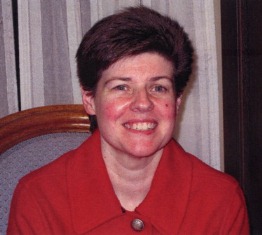 “It's fascinating what 50 bucks will get you at the county recorder's office” is one of my favorite lines from the movie Sneakers. The same can be said about the under-utilized archives across our nation that are teeming with the diaries, letters, invitations, bills of sale, receipts, deeds, etc. of countless individuals.
“It's fascinating what 50 bucks will get you at the county recorder's office” is one of my favorite lines from the movie Sneakers. The same can be said about the under-utilized archives across our nation that are teeming with the diaries, letters, invitations, bills of sale, receipts, deeds, etc. of countless individuals.
Several years ago, I was fortunate enough to discover that my fourth great grandmother left sixteen extant letters and that they were available at the Benjamin F. Feinberg Library, Plattsburgh State University, Plattsburgh, New York. Eunice Jones wrote these letters to her sister and brother-in-law between the years 1853 and 1859, and thankfully they were saved. Eunice spent the last years of her life and is buried very close to my home, but she was just a name and a date. With these letters, I can hear from her in her own words. Her thoughts, feelings, sorrows, and her loneliness ring out regardless of the passage of time. Equally thrilling was the discovery of the names of her other children. Up until I received the letters I only knew the names of four of her children; with the letters four other children were discovered. In one letter Eunice wrote of her sorrow at the death of her elderly mother. In another letter she described their new home, room by room, in Coral, Illinois. Often she mentions her children, making cheese, crop prices, and in every letter mentions how much she misses her extended family back in New York.
Other members of this family also wrote letters to Betsey and Daniel Thew, including a niece Bettie Huston. She lived near Eunice and where her letters end in 1859, Bettie’s were just beginning. She often mentions her aunt, uncle, and cousins. Bettie certainly didn’t mince words when she had an opinion, which makes her letters fun to read and I’m treated to an outsider-looking-in opinion on the family’s conversion to the Reorganized Church of Jesus Christ of Latter-day Saints. In case you couldn’t guess, she didn’t approve. Bettie also chronicled the last illness and death of her beloved Aunt Eunice. It’s not often one is able to find a first-hand account of the death of an ancestor. I felt like the proverbial fly on the wall.
I’ve discovered wonderful things in many different archives across the United States, but these letters, with their first-hand accounts of different events, are my greatest of the great. In fact, I think it is time to reread them again.
—JULIE DRESSER
Brigham Young University (Essay)
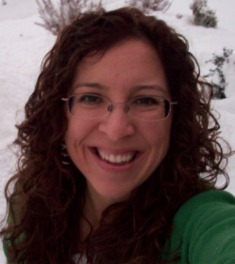 The folklore class I took as a sophomore at Brigham Young University required me to conduct a project that, after grading, would be filed away in the Harold B. Lee Library’s Special Collections archives. We were instructed to choose a subject of interest and then conduct interviews that we would transcribe, analyze, write about, and bind in a book that would be turned over to our professor, presumably never to see the light of day again. I decided to pursue a topic close to my heart—my family.
The folklore class I took as a sophomore at Brigham Young University required me to conduct a project that, after grading, would be filed away in the Harold B. Lee Library’s Special Collections archives. We were instructed to choose a subject of interest and then conduct interviews that we would transcribe, analyze, write about, and bind in a book that would be turned over to our professor, presumably never to see the light of day again. I decided to pursue a topic close to my heart—my family.
I grew up surrounded by cousins—older and younger, and always fun. Grandma and Grandpa’s house was as familiar as my own. Holidays were special because they were spent with extended family—fireworks and a barbeque on the Fourth of July and gifts and my aunt’s lasagna at Christmas. In many ways, my young life was shaped by family traditions. Interviewing my family about those traditions helped me to see how time together had bound us into a cohesive unit. I assembled my project, grateful for the lessons it taught me, and turned it in.
That was ten years ago. The intervening years have proven to be hard on family relations. I now don’t have the chance to interact much with my cousins. My grandparents have passed on, their house no longer a meeting place for us. I miss the togetherness we once had. Reflecting on those times recently reminded me of my class project. I had once written about my family and had been promised my writing would be kept.
This week, I went in search of my family. I went to the Special Collections archives. I gave the staff my name, and they brought to me the work I’d accomplished a decade ago and promptly forgotten about. “Family Traditions: The Ties that Bind,” I had titled it. I read it, cover to cover, smiling over personalities, laughing about stories. It was all there—memories from my grandma, uncle, aunt, cousins—in the only copy I’d made, and for a moment it was if we were together again.
To me, this find is invaluable. I am so grateful that others had the foresight to preserve my family story. The archivists graciously made a copy for me to take home. I plan to add the book to my own stash of records, deeply happy to have found my family in the archives.
—BROOKE SMITH
East Texas Research Center, Stephen F. Austin State University (Video)
—JACY KINGOhio Historical Society (Essay)
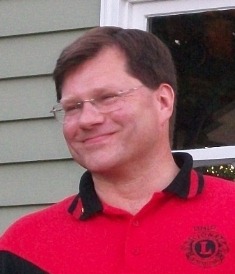 While doing standard obituary lookups in the Toledo Blade microfilm at the Ohio Historical Society archives, I was getting to the bottom of my list when I came to Maggie Kohne who died May 17, 1897. She had been on my list for some time and I always resisted looking for her because I already knew when she died and other family relationships and I figured her obit—if it existed—would take too long to find and reveal nothing important. Boy was I wrong! As I had some extra time that day, I sat down to search for Maggie and found the following in the May 17 issue:
While doing standard obituary lookups in the Toledo Blade microfilm at the Ohio Historical Society archives, I was getting to the bottom of my list when I came to Maggie Kohne who died May 17, 1897. She had been on my list for some time and I always resisted looking for her because I already knew when she died and other family relationships and I figured her obit—if it existed—would take too long to find and reveal nothing important. Boy was I wrong! As I had some extra time that day, I sat down to search for Maggie and found the following in the May 17 issue:
Called the Coroner
Mrs. Fred Kohne, of 1749 Superior Street, died very suddenly at 11 o’clock this morning of uterine hemorrhage. Neighbors reported the matter to Coroner Henzler, intimating that there was something wrong. The coroner will investigate the cause of death. He said to The Blade that he believed everything was all straight, but would look into the matter further to satisfy the suspicious ones.
My interest now piqued, I checked subsequent Blades (and other Toledo papers at the archives) and was drawn into a major scandal of the day, which was covered for weeks by the Toledo media. What happened is that Fred and Maggie had had seven kids in about 12 years of marriage. When Maggie became pregnant with their eighth, she and Fred agreed to abort the child which, of course, was illegal. Their family doctor, William Gardiner, provided the services they sought and in the process, Maggie developed blood poisoning and died.
The case included an initial investigation by the coroner and police detectives, a graveside autopsy, a sensational Coroner’s Inquest featuring testimony from Fred Kohne, Dr. Gardiner, Kohne neighbors, and others. To add more flavor to this soap opera is the fact that Maggie’s father was a captain in the Police Department who refused to tolerate the coroner’s initial foot-dragging in the case.
Dr. Gardiner was indicted. I have not yet discovered the conclusion to the case.
This sad story impacted my research by giving my subjects a very real human face, real emotions and a compelling—if tragic—story. It also provided a tremendous glimpse into the times in which the Kohnes lived. It also shows that one should NEVER assume that a particular bit of research will glean nothing of importance!
—BRIAN FOX
The Pennsylvania State University (Essay)

Our archival tale should be entitled, “I didn’t find it in the archives.” It’s a story about failing to discover corroborating evidence to substantiate a much-ballyhooed story about the history of Penn State in the “fair play” movement to integrate intercollegiate athletics. Several scholars, including the leading historian of the integration in intercollegiate sport,[1] have claimed that in 1940 Pennsylvania State College forced the United States Naval Academy to move a track meet from Annapolis to State College because Navy’s devotion to segregation would have barred Penn State’s African American sprint star Barney Ewell from competing in Annapolis.[2] The source they cite comes not from a 1940 account but from a 1946 editorial in the Centre Daily Times that commends Penn State for publicly defying Jim Crow in intercollegiate sport by cancelling a football game against the University of Miami. The editorial briefly mentions that six years earlier Penn State had allegedly forced Navy to move the 1940 track meet after Navy officials refused to lower the color line for Ewell.[3]
Eager to examine this fascinating episode in the history of Penn State and desegregation, a group of Schreyer honors students and I set out on an expedition to chronicle in detail what had been mentioned in passing by other historians. Descending on the archives and burrowing into the contemporary press accounts, we found confirmation for parts of the story. Navy and Penn State did in fact move their 1940 dual meet from Annapolis to State College. Contemporaneous press accounts, however, never mentioned Ewell, race, or segregation as causes for the relocation. Instead, the press mentioned only a desire to avoid conflicts over final exams and an opportunity to showcase both Penn State and Navy’s track programs to the thousands of high school athletes who would be in Happy Valley at the same time (and on the same track) for the Pennsylvania Interscholastic Athletic Association track and field championships as reasons for the shift.[4] One article mentioned a tantalizing tidbit, noting that just three days before the meet Penn State’s Dean of Physical Education and Athletics, Carl Schott, traveled to Annapolis to negotiate the change of venue, a strange trip for a high-level administrator if only final exams and a high school track meet were the causes of the switch.[5] The very same Carl Schott in 1946 led Penn State’s public stand against segregation in cancelling the football game with Miami.
Hoping to find a “smoking gun” in the records of Dean Schott or Penn State athletics, we dutifully combed a variety of records.[6] We found nothing about the relocation of the 1940 track meet. Undaunted, I informed my students that not finding something in an archive can be as significant as finding something. Though the circumstantial evidence is strong, future references to Penn State forcing integration on Navy in 1940 by moving a track meet from Annapolis to State College will require a footnote that the evidence is at the moment a second-hand reminiscence of an as-of-yet undocumented original incident. Like all good trips to the archive, our “we didn’t find it” in the archives expedition has also laid the foundation for a future expedition.[7] Next up is a trip to Annapolis to scour the Naval Academy’s records in the quest to pin down whether Penn State really launched the opening salvo of the “fair play” campaign in the spring of 1940 against Navy.
—MARK DYRESON
Notes
[1] Charles H. Martin, Benching Jim Crow: The Rise and Fall of the Color Line in Southern College Sports, 1890–1980 (Urbana: University of Illinois Press, 2010).
[2] Charles H. Martin, “Integrating New Year’s Day: The Racial Politics of College Bowl Games,” Journal of Sport History 24 (fall 1997): 358–377.
[3] “Against Prejudice,” Centre Daily Times, 6 November 1946, p. 4.
[4] The search included the Daily Collegian, the Centre Daily Times, the New York Times, the Chicago Tribune, the Chicago Defender and the Pittsburgh Courier. “Shift Lion-Navy Track Meet to State College,” Centre Daily Times, 17 May 1940, p. 6; “Barney, Vukmanic Win Three Events Each as Sprinter Cracks 220 Mark,” Daily Collegian (Pennsylvania State University), 21 May 1940, p. 3; “Weather Man Aids Barney Ewell as Lion Flash Lowers 220 Record,” Centre Daily Times, 20 May 1940, p. 2; Jerry Weinstein, “Rambling Thru,” Centre Daily Times, 23 May 1940, p. 4; “Track Holds Spotlight at College Field,” Centre Daily Times, 24 May 1940, p. 6; “Nittany Trackmen to Meet Middies Here, 2 P.M. Tomorrow,” Daily Collegian (Pennsylvania State University), 24 May 1940, p. 3; “Penn State Triumphs,” New York Times, 26 May 1940, sec. Sports, p. 5; “Trackmen Scuttle Navy Team, 71–55,” Daily Collegian (Pennsylvania State University), 28 May 1940, p. 3; “Maule, Hartman, Ewell, Bakura in Spotlight as Navy Bows to State,” Centre Daily Times, 24 May 1940, p. 6; Dick Peters, “Between the Lions,” Daily Collegian (Pennsylvania State University), 28 May 1940, p. 3.
[5] “Navy Will Come Here for Track Meet Next Saturday,” Daily Collegian (Pennsylvania State University), 17 May 1940, p. 3.
[6] College of Health, Physical Education, and Recreation records, 1922–1979; RGN 70, boxes 1-4; and Norwood “Barney” Ewell Biographical File, Athlete Files, Athletic Department Records, University Archives, Eberly Family Special Collections Library, Pennsylvania State University, University Park, Pennsylvania.
[7] We did get a very well-received presentation at a national conference out of our original expedition. Mark Dyreson, with Hansol Song and Matthew Flowers, Schreyer Honors students. “‘We Are?’ – From Civil Rights at the Cotton Bowl to the Civilities of the Barbershop Boycott: Race and Sport at Penn State and State College, 1939–1965.” 39th Annual Conference of the North American Society for Sport History, University of Texas at Austin, Austin, Texas, 29 May 2011.
Sisters of Mercy Archives (Essay)
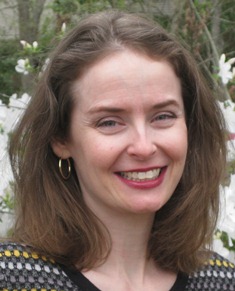 I’m writing a children’s book about ghost towns. One chapter features the island of Chacachacare, which is located off the coast of Trinidad. In the 1920s, a leprosarium was established on Chacachacare to treat individuals diagnosed with leprosy and to isolate them from society. As medical science advanced, the perceived need to segregate the patients from the general public proved unnecessary. Antibiotics liberated the patients from the government enforced seclusion. During the 1980s, the last patient left Chacachacare to reintegrate into society. The island has since remained abandoned. I wanted to learn more about the patients and the people who cared for them, so I turned to Sister Paula Diann Marlin, the archivist at the Sisters of Mercy of the South Central Archives and the Baltimore Collection, for help.
I’m writing a children’s book about ghost towns. One chapter features the island of Chacachacare, which is located off the coast of Trinidad. In the 1920s, a leprosarium was established on Chacachacare to treat individuals diagnosed with leprosy and to isolate them from society. As medical science advanced, the perceived need to segregate the patients from the general public proved unnecessary. Antibiotics liberated the patients from the government enforced seclusion. During the 1980s, the last patient left Chacachacare to reintegrate into society. The island has since remained abandoned. I wanted to learn more about the patients and the people who cared for them, so I turned to Sister Paula Diann Marlin, the archivist at the Sisters of Mercy of the South Central Archives and the Baltimore Collection, for help.
The Sisters of Mercy were Catholic nuns from the United States, who tended the patients at Chacachacare from 1944 to 1955. The Sisters of Mercy Archives contains a scrapbook, photographs, and many letters chronicling the period the Sisters spent at the leprosarium. The letters detail how the Sisters adjusted to life with no electricity, rudimentary plumbing, tropical heat, mosquitoes, malaria, monkeys, and vampire bats. The letters also reveal the Sisters’ concern for their patients. Sister Mary Anita wrote:
“I marvel at their spirit, for after they have been here for a few years, they cannot help but see a patient come in looking fairly well. Then as time progresses, the disease makes itself more apparent. Each experienced one knows that he will likely go the same way.”
My favorite find in the Sisters of Mercy Archives was the description of the wedding between two patients. Both Beulah and Bryan came to the island when they were children. Beulah loved to sing. Bryan excelled as a musician. Despite losing his fingers to the disease, he played the piano and directed the island’s band. When Beulah took music lessons from Bryan, love blossomed between the two of them.
The Sisters of Mercy Archives is important to me because the collection documents the lives of so-called ordinary people. Through the letters that they’ve left behind, we witness their quiet acts of courage and heroism, as they went about their daily lives—the courage to find joy in life when faced with a crippling disease and the courage to care for those whom society alienated. I found it at the archives.
—AMY MORAN
Surfing Heritage Foundation (Essay)
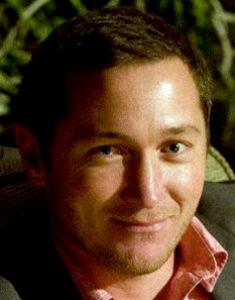 A couple of months ago I went with a large group to the Surfing Heritage Foundation and really enjoyed seeing their collection of vintage surfboards, paddleboards, and other surf memorabilia. As I made my way through the exhibit, I was excited to come across several surfboards that were either shaped or donated by Bob Cooper. Bob is my mom's first cousin, and growing up I always heard about my mom's famous cousin Bob. He moved to Australia many years ago, and I only remember meeting him once when he came here to the States to visit about 25 years ago. It was interesting to see the old surfboards that he collected over the years, that I'm sure would have been considered retro boards back when he got his hands on them. I was most interested in the Blue Machine, which is a 9' 5" big blue board that was shaped by Bob while he was living in Santa Barbara. When I read the plaque next to the Blue Machine, I noticed it was shaped with an asymmetrical fin set-up, and I was a little tempted to steal it, just to take it out for a few waves. I thought about it, and figured I wouldn't get too far trying to run out the front door with a bright blue long board that weighs 25 pounds. I took several pictures of Bob's boards and showed them off to my brothers who were stoked to see these old boards. I live right here in San Clemente and had no idea this incredible collection of surf history was just a couple of miles away from my house. About a year ago I came into contact with Bob's son who lives in Australia, but travels here to the U.S. for work quite often. Next time he comes out to Southern California, I'll be sure to bring him by the Surfing Heritage Foundation to check out Bob's old boards.
A couple of months ago I went with a large group to the Surfing Heritage Foundation and really enjoyed seeing their collection of vintage surfboards, paddleboards, and other surf memorabilia. As I made my way through the exhibit, I was excited to come across several surfboards that were either shaped or donated by Bob Cooper. Bob is my mom's first cousin, and growing up I always heard about my mom's famous cousin Bob. He moved to Australia many years ago, and I only remember meeting him once when he came here to the States to visit about 25 years ago. It was interesting to see the old surfboards that he collected over the years, that I'm sure would have been considered retro boards back when he got his hands on them. I was most interested in the Blue Machine, which is a 9' 5" big blue board that was shaped by Bob while he was living in Santa Barbara. When I read the plaque next to the Blue Machine, I noticed it was shaped with an asymmetrical fin set-up, and I was a little tempted to steal it, just to take it out for a few waves. I thought about it, and figured I wouldn't get too far trying to run out the front door with a bright blue long board that weighs 25 pounds. I took several pictures of Bob's boards and showed them off to my brothers who were stoked to see these old boards. I live right here in San Clemente and had no idea this incredible collection of surf history was just a couple of miles away from my house. About a year ago I came into contact with Bob's son who lives in Australia, but travels here to the U.S. for work quite often. Next time he comes out to Southern California, I'll be sure to bring him by the Surfing Heritage Foundation to check out Bob's old boards.
—CRAIG LESUERE
The Texas State Library and Archives Commission (Essay)
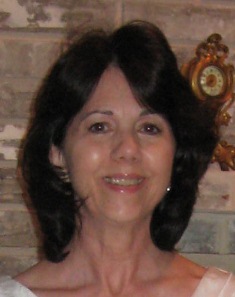 As I was waiting for a file to be pulled in the Texas Archives, I decided to peruse one of the finding aids on the shelves. Imagine my delight and surprise to find a listing for my husband’s 3rd great grandfather’s surname! At that time, I knew a little about my husband’s 3rd great grandfather, William Oliphant. He was born in Dunfermline, Fife, Scotland, and came to the United States in 1833. He and his family traveled from Indiana in 1852 to move to a warmer climate. The family settled in Austin, Texas, instead of Houston because of the dread of yellow fever in the Houston area. Oliphant eventually acquired the land on which the Driskill Hotel now stands on 6th Street in Downtown Austin and built a two-story brick building which housed his jewelry store and (later) a photography store for his son, William James.
As I was waiting for a file to be pulled in the Texas Archives, I decided to peruse one of the finding aids on the shelves. Imagine my delight and surprise to find a listing for my husband’s 3rd great grandfather’s surname! At that time, I knew a little about my husband’s 3rd great grandfather, William Oliphant. He was born in Dunfermline, Fife, Scotland, and came to the United States in 1833. He and his family traveled from Indiana in 1852 to move to a warmer climate. The family settled in Austin, Texas, instead of Houston because of the dread of yellow fever in the Houston area. Oliphant eventually acquired the land on which the Driskill Hotel now stands on 6th Street in Downtown Austin and built a two-story brick building which housed his jewelry store and (later) a photography store for his son, William James.
But what I found in the archives was so much more than just family facts—there were boxes and boxes of family memorabilia! We had moved to Austin in 1985 and had little information on the family, much less any early personal items. Included in the boxes were items as small as a grocery list to invaluable original letters written from family members, some as far away as Pennsylvania. There was even a funeral notice for the elder William’s wife, Jane Eliza Van Zile after her death in 1867. These items gave me many clues regarding family connections that I had previously not had any knowledge. You cannot find this personal type of information in a book, official government document, or on the Internet.
Perhaps the most interesting article in one of the boxes was a handwritten account by William’s son, William James Oliphant, regarding his time as a young Confederate soldier during the war and as a prisoner of war. It was handwritten in pencil and was many pages. This manuscript contained a great deal of personal family information, such as when one of his aunts who lived at Green Castle, Indiana, sent him some clothing and a blanket on his nineteenth birthday to use in his freezing prison at Camp Chase in Ohio. I am happy to report that William survived the war. He returned to Austin to become a photographer and, despite his war injuries, lived a long life.
The Texas Archives contains many, many invaluable documents. However, having a peek at the personal side of my husband’s family is a treasure that will be cherished and remembered for many years by our family.
—CONNIE PERDUE
Texas State Archives Editorial Note:
The William Bradford Bugg and Mildred Webb Bugg Collection and the Walter Prescott Webb and Family materials were donated to the Texas State Archives by William Bradford Bugg and Mildred Webb Bugg, daughter of historian Walter Prescott Webb and his wife Jane Elizabeth Oliphant Webb (who was the daughter of William James Oliphant). The essay author, Mrs. Purdue, met Mildred Webb Bugg before her death; however, Mrs. Bugg didn’t mention the donation to the Archives. Thus, it was a complete surprise to the writer to find the family collection at the Archives.